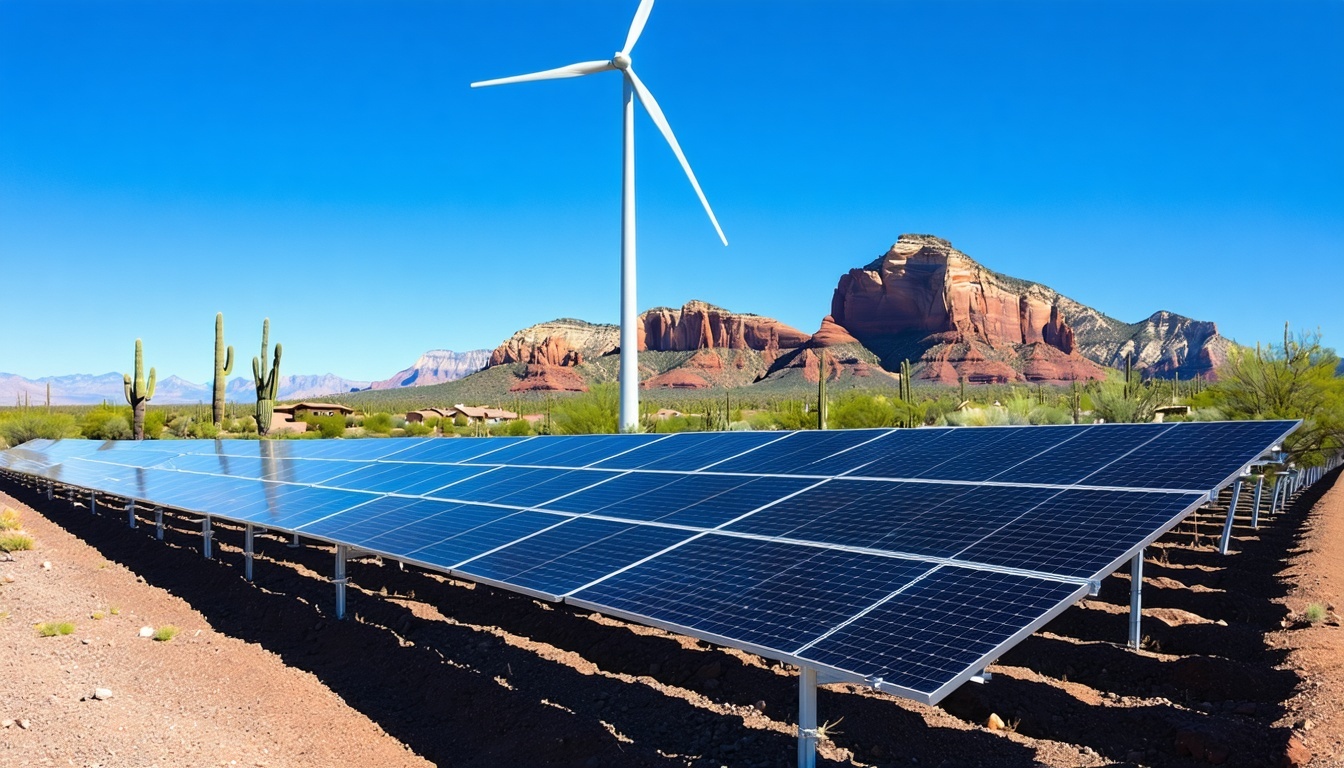Funding Renewable Energy Projects in Arizona
Arizona’s abundant sunshine and open land make it one of the most promising states for renewable energy. From utility-scale solar farms to community wind projects and commercial battery storage systems, green energy initiatives are transforming the state’s energy landscape.
But one thing stands between vision and reality: capital.
Whether you're a solar installer, clean-tech startup, nonprofit, or investor, this guide explores how to fund renewable energy projects in Arizona through loans, grants, tax credits, and state-backed programs.
Why Invest in Renewable Energy in Arizona?
Arizona ranks among the top states for solar potential and has increasing demand for clean energy solutions due to:
-
High electricity costs and long daylight hours
-
Federal and state-level decarbonization goals
-
Public utility commitments to renewable portfolios
-
Growing consumer and commercial interest in sustainability
🌞 With over 300 sunny days a year, Arizona is naturally positioned to lead in solar energy production.
But renewable energy systems are capital-intensive. Project financing options help offset large upfront costs and support long-term ROI.
1. Federal Clean Energy Loan & Grant Programs
The federal government offers powerful funding options for renewable energy developers and small businesses.
💼 DOE Loan Programs Office (LPO)
-
Focus: Large-scale clean energy and grid modernization projects
-
Programs: Title 17 Clean Energy Financing, Advanced Technology Vehicles Manufacturing (ATVM)
-
Funding: Up to billions for qualifying clean tech projects
-
Website: energy.gov/lpo
💡 USDA Rural Energy for America Program (REAP)
-
Use: Renewable energy systems and energy efficiency improvements for rural businesses and ag producers
-
Grants: Up to 50% of eligible project costs
-
Loans: Up to 75% of project costs
-
Eligible Projects: Solar, wind, biomass, geothermal
-
Arizona USDA Contact: rd.usda.gov/az
🧾 Investment Tax Credit (ITC)
-
Offers up to 30% federal tax credit on solar and other renewable system costs
-
Can be claimed directly or sold to tax equity investors
-
Updated under the Inflation Reduction Act (IRA)
7-Step Process to Finance an Arizona Solar Project
(Featured Snippet Section)
-
Assess project scope and cost
-
Identify federal and state incentives
-
Apply for local permits and utility interconnection
-
Secure loans or grant pre-approval
-
Complete engineering and procurement
-
Install and commission the system
-
Submit documentation for tax credits or reimbursement
2. Arizona State Renewable Energy Programs
⚡ Arizona Public Service (APS) & SRP Incentives
-
APS: Offers rebates for commercial solar systems, battery storage, and demand response programs
-
SRP: Rebates for solar water heating, battery storage, and demand management
-
Application Required: Through certified installers
🌞 Arizona Solar Energy Credit
-
State income tax credit up to $1,000 for residential solar installations
-
Can reduce personal tax liability in Arizona
-
May apply indirectly to business owners installing on mixed-use property
📍 Check azdor.gov for latest credit forms and eligibility criteria.
3. SBA Loans and Green Business Financing
Small businesses going green in Arizona may qualify for SBA-backed financing, especially through eco-aligned lenders.
🌿 SBA 504 Green Loan
-
For clean energy upgrades, green building construction, or solar system purchases
-
Offers up to $5.5 million per project
-
Must reduce energy use by 10% or generate renewable energy
-
Available from Arizona CDCs like Southwest Business Finance Corporation
💳 SBA 7(a) Loan (Green Purpose)
-
Funds working capital, solar equipment, or storage solutions
-
Terms up to 25 years
-
Ideal for businesses integrating renewables into their operations
Real Example: Commercial Solar Expansion in Tucson
Business: GreenEdge Landscape Supply
Project: 120 kW rooftop solar + battery storage for net-zero operations
Funding:
-
$100K SBA 504 Green Loan
-
$30K USDA REAP grant
-
30% Federal ITC tax credit
Outcome: -
Reduced energy bills by 85%
-
Recouped project cost within 5 years
-
Marketed “sustainable operations” to gain new clients
4. Alternative Financing for Clean Energy Projects
🏢 Power Purchase Agreements (PPA)
-
Third-party owns and installs the system
-
Your business agrees to buy electricity at a fixed rate
-
No upfront cost — ideal for nonprofits or schools
💰 Green Banks and CDFIs
-
Offer flexible clean energy loans with mission-driven terms
-
National Clean Energy Fund (launched under IRA) to be rolled out in 2025
-
Prestamos CDFI and Solar and Energy Loan Fund (SELF) expanding to the Southwest
🔗 Equipment Leasing
-
Lease solar panels or battery storage
-
Keep cash flow flexible while reducing energy costs
-
Option to purchase after lease term
External Authoritative Links
-
U.S. Department of Energy LPO (opens in new tab)
-
Arizona Department of Revenue Solar Credit Info (opens in new tab)
-
USDA REAP Program (opens in new tab)
-
Arizona Public Service Incentives (opens in new tab)
Pros and Cons of Renewable Energy Project Financing
| Pros | Cons |
|---|---|
| Federal and state tax credits reduce project costs | Permitting and interconnection can be time-consuming |
| Grants and loans help offset large capital expenses | Complex application processes for grants/loans |
| Long-term ROI through reduced energy bills | Project timelines may delay access to tax benefits |
| PPA and leasing reduce upfront burden | May limit system ownership and long-term savings |
Conclusion: Arizona’s Future Is Renewable—Make It Yours
From solar farms to green commercial buildings, Arizona's renewable energy market is growing fast—and the funding is there to support it.
Whether you’re launching a clean energy startup, converting your warehouse to solar, or developing a battery storage system, there’s never been a better time to fund your project. With the right mix of SBA loans, federal tax incentives, and Arizona-specific programs, your renewable energy vision can become a reality.
Ready to fund your renewable energy project in Arizona?
Connect with a clean energy lender, explore USDA and SBA loan programs, or work with your utility to take the next step toward sustainable energy.











